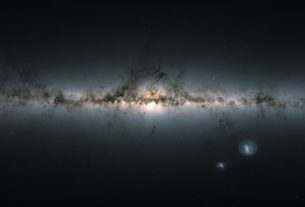The Solar Orbiter, jointly developed by ESA and NASA, flew close to Venus for the first time, and took the opportunity to collect some data on our tumultuous neighbor.
Launched last February with 10 new instruments on board, the mission of the probe is to study the solar winds, the star’s magnetic field, its eruptions or even its coronal mass ejections, and thus allow scientists to understand it better.
No image produced
During its mission during which it will be in orbit around the Sun, Solar Orbiter must carry out several overflights of Venus. For the first, the probe passed about 7,500 kilometers above the highest clouds on the planet. “Solar Orbiter is of course a mission that is not designed specifically for observing Venus. We are always looking for bonus opportunities to do science, so yes, we will be making observations when we get close to Venus, ”said Daniel Müller, scientist at ESA, at a press conference on 10 December.
Thus, the possibilities of Solar Orbiter for the study of Venus are limited, in particular because its design is designed specifically for the analysis of our star: “We must always point our heat shield towards the Sun, that cannot be changed. The telescopes all look through the heat shield in the direction of the Sun, ”said the researcher. As a result, no image of Venus could be immortalized by the probe. However, she collected data using her magnetometer and other instruments that could study the direct environment of the planet.
Studying the impact of solar winds on Venus
Researchers hope they can use this information to learn more about the impact of solar winds on Venus. The latter does not have a magnetic field like the Earth, the winds interact directly with its environment.
And since this was the very first flight over the hottest planet in the Solar System, scientists will also be able to study its effects on the probe. If they were in contact with Solar Orbiter at the time of the flyby, they must now wait a few days to find out more.
In total, the probe is expected to make 9 flyovers over Venus and spend between 7 and 10 years studying the Sun.

Email: mary@satprwire.com Phone: +44 20 4732 1986
Marry is a fitness freak in every manner and gives proper care about her health and of others. She is probably the best person we have at Daily Research News for covering articles from the Health sector. If not at work, she can be seen drinking a cup of coffee.



